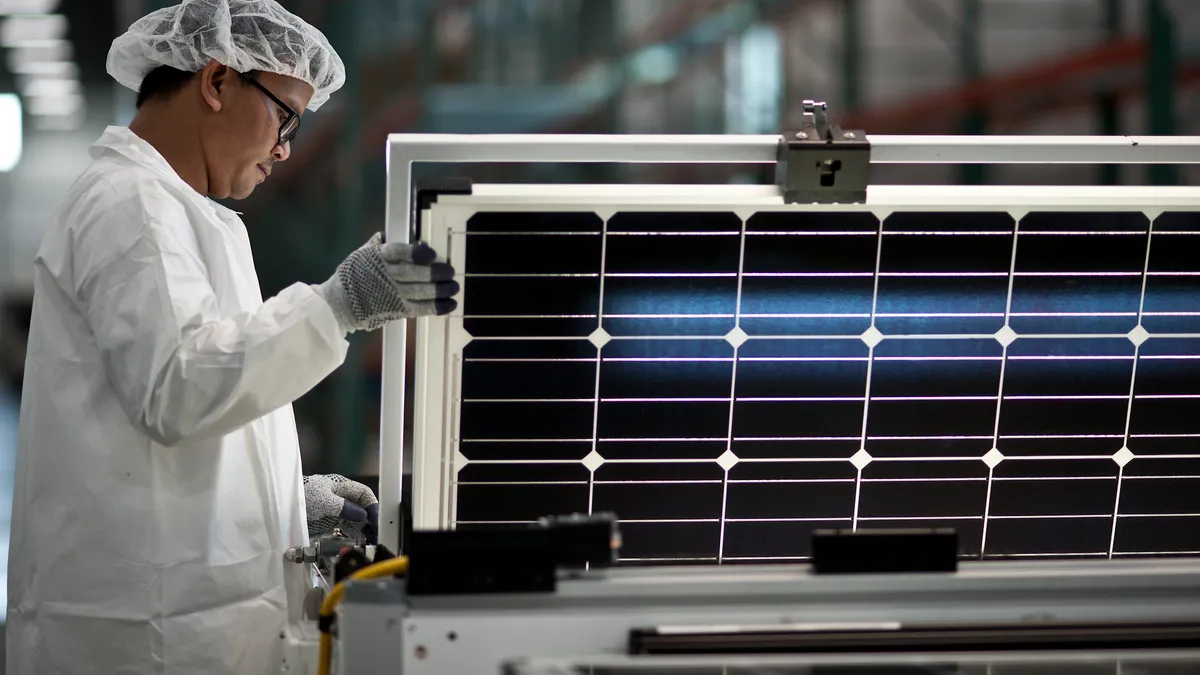Dive Brief:
-
Hanwha Q Cells Korea announced Wednesday it will build a solar module manufacturing factory in Whitfield County, Georgia, which will exceed 1.6 GW nameplate capacity per year.
-
Combined with announcements from other solar panel makers, U.S. production capacity is projected to increase 3.4 GW, more than doubling domestic manufacturing from the end of last year, according to Bloomberg New Energy Finance data.
-
The growth in domestic capacity is an immediate result of the 30% duties imposed by the Trump administration on solar imports earlier this year, to protect U.S. solar manufacturing jobs. But the production boost may not lead to significant job creation, according to Bloomberg.
Dive Insight:
President Donald Trump's solar tariffs have not brought significant hardship to the industry, as solar advocates had anticipated.
While the tariffs will "shrink the total addressable market for U.S. utility-scale solar," the industry will still see "consistent increases in new capacity year over year," GTM Research Senior Solar Analyst Colin Smith told Utility Dive in April.
Hanwha Q Cells expects to begin construction in 2018 and to complete the factory in the next year. The company is the latest in a string of U.S. production capacity additions following the duties.
SunPower announced last month that it will buy the largest solar panel manufacturer in the U.S., SolarWorld, allowing the company to avoid paying tariffs on imported solar panels and modules. SunPower promised to invest in SolarWorld's Oregon production facility, where it will now make its P-series panels along with SolarWorld legacy products.
At the end of March, NextEra Energy announced a major solar panel supply agreement with JinkoSolar Holding Co. for 2.75 GW. The China-based manufacturer will open its first U.S. factory in Florida and is expected to create more than 200 direct jobs in the state.
The advancement of solar panel factories has also been a point of concern regarding job creation, due to the increasing automation happening in solar factories.
"The profits will flow offshore, and the highly-automated production lines will bring few jobs," Hugh Bromley, an analyst with Bloomberg New Energy Finance, told Bloomberg News.














